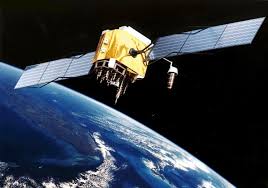 For several decades, the bedrock foundation of U.S. military superiority has been the Pentagon’s ability to employ data derived from satellites to make U.S. weaponry more accurate and more deadly. This strategy also led to significant cost savings. Guided by orbital assets, a single missile or aircraft strike could accomplish a mission that in the past would have required far more ordinance, and far more risk to American personnel.
For several decades, the bedrock foundation of U.S. military superiority has been the Pentagon’s ability to employ data derived from satellites to make U.S. weaponry more accurate and more deadly. This strategy also led to significant cost savings. Guided by orbital assets, a single missile or aircraft strike could accomplish a mission that in the past would have required far more ordinance, and far more risk to American personnel.
That strategy, which paid off rather spectacularly in the two Gulf wars, is now under significant threat due to the advances made by several nations. The Pentagon’s success in the 1991 Gulf War and later U.S. military operations demonstrated the value of the U.S. GPS satellite navigation system for troop movement, force tracking, and precision munition delivery. Other nations immediately grasped the concept, and began to develop their own orbital military assets. That’s the key point of a report created by the National Air and Space Intelligence Center (NASC) detailing developing trends in the space domain and the growing challenges posed by foreign space assets. The report, titled “Competing in Space,” was created at the request of senior Air Force leaders.
While effective, the strategy of relying on orbital assets to preserve military dominance had a key weakness: it only worked if the nation’s opponents in armed conflicts didn’t have the technology to counter or even destroy U.S. satellites.
In the immediate aftermath of the Cold War, Washington faced no such adversary. That advantage no longer exists. As the NASC report notes, “Over the past two decades, an emergent China and a resurgent Russia developed advanced technologies that eroded our advantage. Foreign competitors are integrating advanced space and counterspace technologies into warfighting strategies to challenge U.S. superiority and position themselves as space powers… China and Russia have organized new military forces devoted to the employment of space and counterspace capabilities and regularly integrate them into military exercises. Meanwhile, these countries continue to develop, test, and proliferate sophisticated anti-satellite weapons to hold U.S. and allied space assets at risk.”
Russia and China have the capability to use anti-satellite missiles to destroy American satellites in low Earth orbit. In 2007, Beijing demonstrated this capability by destroying one of its own orbiting obsolete weather satellites. That action produced an unintended consequence, in addition to threatening U.S. space assets. Debris from the target satellite spread, threatening other space assets not intended as targets. the impact of this collision generated over 3,000 pieces of space debris that will continue orbiting the Earth for decades.
 Both Moscow and Beijing continue to actively test and perfect their space warfighting technology. In addition to satellite-killing missiles, directed-energy weapons designed to produce reversible or non-reversible effects against space systems by emitting highly focused radio frequency or laser energy exist. The NASC report notes that “Both China and Russia intend to field counterspace directed-energy weapons. Over the past two decades, Chinese defense research has proposed the development of several reversible and non-reversible counterspace directed-energy weapons. Russia is reportedly developing an airborne laser weapon system intended for use against space-based missile defense sensors.
Both Moscow and Beijing continue to actively test and perfect their space warfighting technology. In addition to satellite-killing missiles, directed-energy weapons designed to produce reversible or non-reversible effects against space systems by emitting highly focused radio frequency or laser energy exist. The NASC report notes that “Both China and Russia intend to field counterspace directed-energy weapons. Over the past two decades, Chinese defense research has proposed the development of several reversible and non-reversible counterspace directed-energy weapons. Russia is reportedly developing an airborne laser weapon system intended for use against space-based missile defense sensors.
Although Moscow and Beijing are the major threats, the swift spread of technology and the reduced cost of some components of space technology will allow other nations, and even non-state actors such as terrorist organizations, to eventually gain the ability to attack satellites directly or limit their ability to function. Some of this equipment to accomplish this is commercially available on the open market.
The necessity of protecting America’s satellites, both those used by the military as well as those vital to commerce, was a motivating factor in President Trump’s drive to create an independent U.S. Space Force.
Frank Vernuccio serves as editor-in-chief of the New York Analysis of Policy and Government.














Follow Us